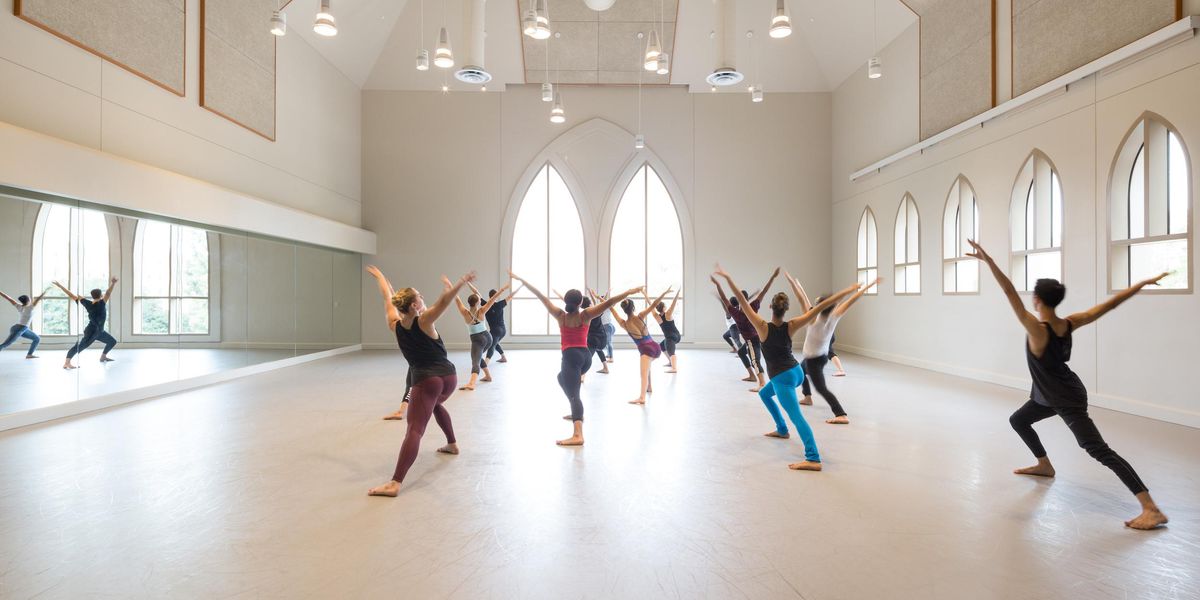Back to the Bolshoi
Inside Yuri Possokhov’s latest premiere for his home company
Photography by Quinn Wharton
Bolshoi principal Yekaterina Shipulina lets loose in rehearsal.
Possokhov demonstrates a partnering sequence on Shipulina.
Yuri Possokhov left the Bolshoi Ballet in 1992 on a quest to dance more current work. He ended up developing a passion to choreograph that work himself, and this month, a new generation at the Russian company debuts his latest full-length, Hero of Our Time. The ballet’s story comes from a well-known Russian novel about a bored anti-hero whose adventures take a dark turn. It’s bound to be rich fodder for Possokhov: As choreographer in residence at San Francisco Ballet, his contemporary pieces are regularly hailed for their imaginative theatricality and wit. Dance Magazine captured the rehearsal process in Moscow this winter, and asked Possokhov for his thoughts on the Bolshoi’s past and present.
How does it feel to go back to the Bolshoi as a choreographer?
Kind of hard. I always have problems choreographing on dancers who are friends. The relationship in the studio gets tricky. This is my third time choreographing at Bolshoi: I set Magrittomania in 2004, and created Cinderella in 2006. Now is not a perfect time for Bolshoi. It’s still an uncertain situation there since the attack. They’re in transition, trying to escape from the past, but people don’t know where the company will go.
Principal Artem Ovcharenko has been hailed for his performances in contemporary rep.
Does that make the process difficult?
As a choreographer, the number one problem is actually the schedule: The dancers perform almost every day, so to find the right time to gather together and create something is hard. They perform, they tour—it’s nonstop.
How does today’s Bolshoi compare to when you were with the company?
It’s completely different. The rep I was dancing was from the 1870s. Today, the Bolshoi has a huge variety: Mats Ek, Jirí Kylián, John Neumeier. It’s so important that the young generation has something to dance that expresses themselves. Unfortunately, my generation expressed the generations before us.
What are Bolshoi dancers like to create on?
The young generation kind of devours what they’re doing. They’re hungry for new works. I like to choreograph on them because they have the same training as me, so I understand their movement and their mentality. And it’s such a huge plus they are almost all from the same school. It’s not like you have people from here and there and there, with different feelings and different styles of dancing. It’s a big benefit that I can move the whole company in one way.
How does it compare to creating on SFB?
San Francisco is an amazing company because the dancers perform so many new contemporary works every year. For me, it was a huge experience to learn from people like Christopher Wheeldon and Mark Morris. But the Bolshoi Theatre is still based on mostly classical ballets. So my demands are a little bit different than what these dancers are used to.
Why did you base your new ballet on a novel?
We wanted to do something different from the already famous ballets. Hero of Our Time is a very popular book in Russia—everybody learns it in school. But for ballet, it’s a completely new story with completely new music.
The dancers watch a piece of choreography on a ballet master’s tablet.
How do you see it fitting into the Bolshoi repertoire?
I am trying to kind of combine my choreographic experience in the U.S. with the drama experience that I got in Russia—it’s two different approaches to ballet performance. I think I have a different musicality that maybe is not comfortable for Russian dancers, but they’re learning. It’s time for them to learn to move differently, to dance differently.
What is your favorite thing to do in Moscow?
I like to walk in the old city. When I walk, I think, I dream—and dreaming is my favorite thing in my life.
Artem Ovcharenko
Possokhov with Ovcharenko
Ovcharenko leaps over Shipulina





